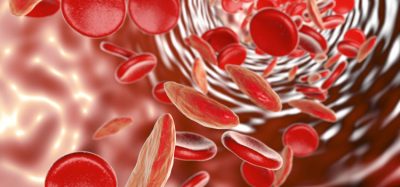CRISPR epigenetic ‘switch’ provides new way to control memory
Posted: 30 October 2025 | Drug Target Review | No comments yet
For the first time, researchers have demonstrated that flipping an epigenetic ‘switch’ in memory cells can directly control whether a memory is expressed or silenced, offering new insights into how memories are stored and potentially altered.


Every experience we have leaves a mark in the brain, encoded within small clusters of cells known as engrams. These engrams are thought to hold the blueprint of a memory and become active whenever we recall it, making them a key focus for researchers studying age or trauma-related memory loss.
Researchers also know that learning is accompanied by epigenetic changes – chemical ‘notes’ that cells add to DNA to control gene activity. However, it has remained unclear whether altering the epigenetic state of a single gene could directly influence a memory.
Investigating the Arc gene
A research team led by Professor Johannes Gräff at Ecole Polytechnique Fédérale De Lausanne (EPFL) Laboratory of Neuroepigenetics combined CRISPR-based gene editing with a method that labels engram cells in mice. They concentrated on a gene called Arc, which helps neurons adjust their connections. By targeting the regulatory region of Arc, the team asked whether modifying its epigenetic ‘switch’ could alter memory.
Biomarkers aren’t just supporting drug discovery – they’re driving it
FREE market report
From smarter trials to faster insights, this report unpacks the science, strategy and real-world impact behind the next generation of precision therapies.
What you’ll unlock:
- How biomarkers are guiding dose selection and early efficacy decisions in complex trials
- Why multi-omics, liquid biopsy and digital tools are redefining the discovery process
- What makes lab data regulatory-ready and why alignment matters from day one
Explore how biomarkers are shaping early drug development
Access the full report – it’s free!
Creating the epigenetic switch
In the study, the scientists developed CRISPR-based tools designed to either reduce or enhance Arc activity in memory neurons. Some, such as the KRAB-MeCP2 tool, switched off gene activity by adding repressive marks that make DNA less accessible, while others opened the DNA to activate the gene. These tools then acted as an epigenetic switch for Arc.
Using harmless viruses, the team delivered these tools into the hippocampus, a brain region critical for memory storage and recall.
Using harmless viruses, the team delivered these tools into the hippocampus, a brain region critical for memory storage and recall. The mice were trained to associate a specific location with a mild foot shock. By manipulating Arc’s epigenetic state in the engram cells, researchers could observe whether the animals remembered the shock. They also included a safety switch that could reverse the editing and reset the memory.
The experiments found that silencing Arc epigenetically prevented the mice from forming the memory, while boosting Arc strengthened it. Remarkably, these effects could be reversed in the same animal, showing that this switch can dial memory expression in both directions. Even memories several days old, typically resistant to change, could be modified. On a molecular level, these edits triggered changes in gene activity and DNA organisation that matched the behavioural results.
Controlling memory at the cellular level
This study gives researchers the first direct evidence that adjusting the epigenetic state of memory cells is both necessary and sufficient to control memory expression. It could lead to deeper exploration of how memories are formed, stored and modified, potentially with a view to developing therapies for humans in the future.
These approaches could help scientists better understand conditions where memory processing goes wrong, including traumatic memories in PTSD, drug-associated memories in addiction or the memory deficits seen in neurodegenerative diseases.
Related topics
Central Nervous System (CNS), CRISPR, Drug Discovery Processes, Epigenetics, Molecular Biology, Neurons, Neurosciences, Therapeutics, Translational Science
Related conditions
Addiction, Neurodegenerative diseases, PTSD
Related organisations
Ecole Polytechnique Fédérale De Lausanne (EPFL)








